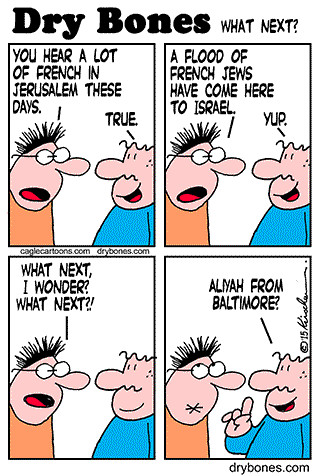Baltimore ‘riot mom’ needed in Jerusalem
One of the most enduring images from the Baltimore riots was that of the irate mother of a rioter vigorously admonishing and slapping her law-breaking teenage son. Millions of frustrated Americans, watching the televised images of mobs of young people burning and looting at will, no doubt wondered, “Where are their parents?” Toya Graham, dubbed “the Baltimore Riot Mom” by the media, was one parent who refused to stand idly by any longer.
Some Israelis are probably wishing there were a few “riot moms” in the Arab neighborhoods of Jerusalem. The New York Times on May 1 published a lengthy, sympathetic report about two Arab boys, ages 12 and 7, who were arrested for throwing rocks at a bus in Jerusalem. The newspaper’s correspondent, Diaa Hadid, reported that human rights groups claim that by arresting young rock-throwers, Israel is unfairly “traumatizing the children.”
The article did note that a 4-year-old Israeli girl, Adele Biton, recently died from injuries caused by Arab rock-throwers. Although the New York Times did not mention it, at least 14 Israelis have been killed in rock-throwing attacks, three of them Israeli Arabs who were attacked because they were mistaken for Israeli Jews.
There are a number of ways that a rock can prove lethal. It can strike a passenger directly in the head, as happened, for example, to Esther Ohana, as she was delivering invitations to her wedding in 1983; and to 5-month-old Yehuda Shoham, as he was strapped in his infant car seat in 2001. Or it can strike the driver, causing a fatal crash, as happened to the driver of the car in which 11-year-old Chava Wechsberg was a passenger, in 1993; and to Asher Palmer in 2011, killing him and his 1-year-old son.
Even if the rocks that were thrown at the bus in Jerusalem last week did not break the glass, the jolt and shock of a barrage of stones smashing against the front windshield could have caused the driver to swerve, endangering the lives of both the bus passengers and pedestrians nearby.
Much of the New York Times article consisted of quotes from relatives of the two arrested boys, trying to paint them in sympathetic terms.

 49.0°,
Overcast
49.0°,
Overcast 




